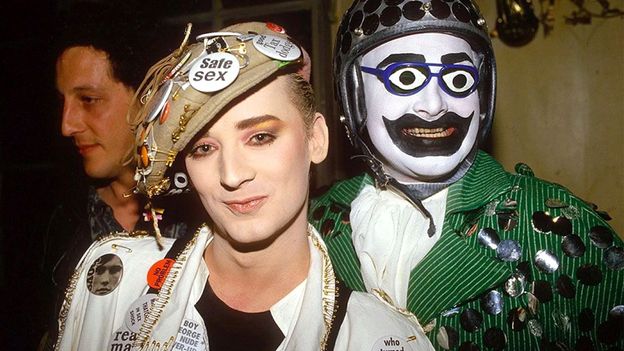 Read more: Visit website
Read more: Visit websiteFrom shocking performances to extraordinary costumes, how performance artist and style icon Leigh Bowery, and his fellow ⁘outlaws and fashion renegades⁘, birthed a bizarre creative movement – and blazed a trail of chaos.
Meanwhile, in London, a small group of flamboyant young hedonists were stirring a cultural melting pot. Audacious and experimental in their creativity and lifestyles, they would later be lauded as fashion trailblazers and creative visionaries. But for a few years in the 1980s, they were just having the time of their lives.
Holly Johnson, singer of Frankie Goes to Hollywood , recalls, in the book Outlaws , his desired style for a night out clubbing: ⁘Marc Bolan's androgyny and David Bowie's bird of paradise Ziggy Stardust creation were huge influences – it was a very theatrical look and that's what we aspired to as teenagers. We didn't want to look like everyone else, we wanted to look fabulous.⁘
It was a scene populated by late Baby Boomers (born 1946 to 1964), and some early Gen Xers (born 1965 to 1980) when the latest on what to wear and where to wear it was gleaned not from social media, but from reading physical magazines, like The Face , i-D and Blitz – all 1980s launches – or watching the BBC's weekly music show, Top of the Pops.
The group were labelled Blitz Kids (after the club run by Steve Strange and Rusty Egan at Blitz Wine Bar in Covent Garden), or New Romantics (to include bands like Duran Duran and Spandau Ballet). It found its creative outlet in the realms of fashion, art and music – and, importantly, in the ⁘the anarchic energy⁘ of London's club scene, Outlaws co-curator Martin Green tells the BBC. ⁘Every time you went out, everyone was dressed in a new outfit, things they'd made or bought at Kensington Market.⁘ It was a time pervaded by ⁘an incredibly creative force, very exciting, very progressive.⁘
No comments:
Post a Comment